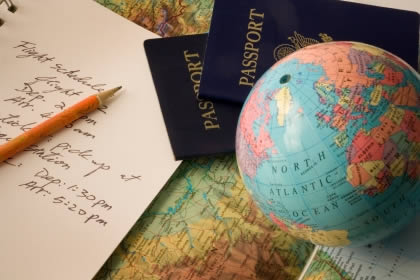Corfu Travel Guide
Corfu is one of the most popular islands in Ionian Sea. It is visited by both regular and adventurous tourists as it combines natural beauty with ample tourist facilities that cater to every taste.
Seaside resorts are crowded during the summer months, so booking in advance is wise. In winter the countryside is ideal for a variety of activities such as horse riding or hiking, while the great number of taverns all over the island offers visitors traditional Greek dishes and local specialties. Seafood is very popular in Corfu and you can get fresh fish in most places.
Corfu Island is situated on the west coast of Greece, near Albania on the east and Italy on the west, and is considered to be one of its greenest and most beautiful islands. It covers an area of 634 square kilometers and has a population of around 108,000.
Due to its central position in Ionian Sea, at the entrance of Adriatic Sea, Corfu is a vital center with regard to commercial, strategic and military interests.
The climate is mild with a lot of rainfall in winter and the temperatures are neither very low in winter nor very high in summer. Sometimes there are some heat waves as in the rest of Greece but the sea breeze and the sea water counteract the negative effects. There is great humidity in Corfu all the year round.
Corfu History
The ancient name of the island is Drepanon, but today, all over Greece, it is known as Kerkyra, which, according to the Greek mythology, is the name of the wife of Poseidon, the god of the sea. Throughout history the island was known by various names. Mythology mentions the myth of Kerkyra, one of the twelve daughters of Assop and his wife, Metopis. Poseidon, the god of the sea, fell in love with her, kidnapped her and brought her to the island to hide her from his wife, Amphitreti. However, Pluto, the god of Addis, envied Poseidon’s success and one night he kidnapped Kerkyra and took her down to Adis, leaving Poseidon their baby, Phaiakas. Therefore, in the years of Ulysses the island was named after him and was called Phaeceans.
The island is a natural bridge between Greece in the east and the Western countries, especially Italy, and for this reason it was used as a financial and commercial crossroad. The merchants, coming from the West, sailed to this port on their way to the East, and were charmed by the natural beauty of the island.
The fact that Corfu possesses a vital strategic position was certainly a main cause for the island’s occupation by various invaders such as the Romans, Byzantines, Goths, Venetians, Sicilians and Catalans. Even the Ottomans set their eyes on the island. In 1537 the Ottomans attacked the island and the Venetian aristocrats ordered the residents to destroy their houses in order to deny the invaders shelter and prevent their establishing a permanent settlement. If the island had not had strong fortifications it is certain that it would have fallen into the hands of the Ottomans who eventually surrendered and withdrew. Subsequently, additional fortresses were built and the island’s defenses were fortified.
Corfu remained under the Venetians rule until 1797. In that year, Napoleon occupied Venice and the island was taken over by the French for the short period of one year.
In 1799 the Ottomans finally occupied Corfu and following an agreement between Turkey and Russia the island was divided into sectors. This regime was short lived because, in 1815, the area was occupied by the British who maintained control of the island until 1864, when they finally withdrew and handed it over to Greece. Today, Corfiots celebrate May 21 as the anniversary of their freedom from the British by organizing church prayers, sport events and school parades. So, in 1864, Corfu joined Greece. But despite the fact that Corfu had became part of Greece, the Italians never stopped desiring to possess the island, and, in 1923 they bombed Corfu. In 1941, During World War II, they occupied the island where they remained until 1943, when the Germans occupied it. That was the last occupation. Since the end of World War II Corfu has been free and has thrived in various sectors such as the economic, educational and artistic one.
Corfu Activities >>>
